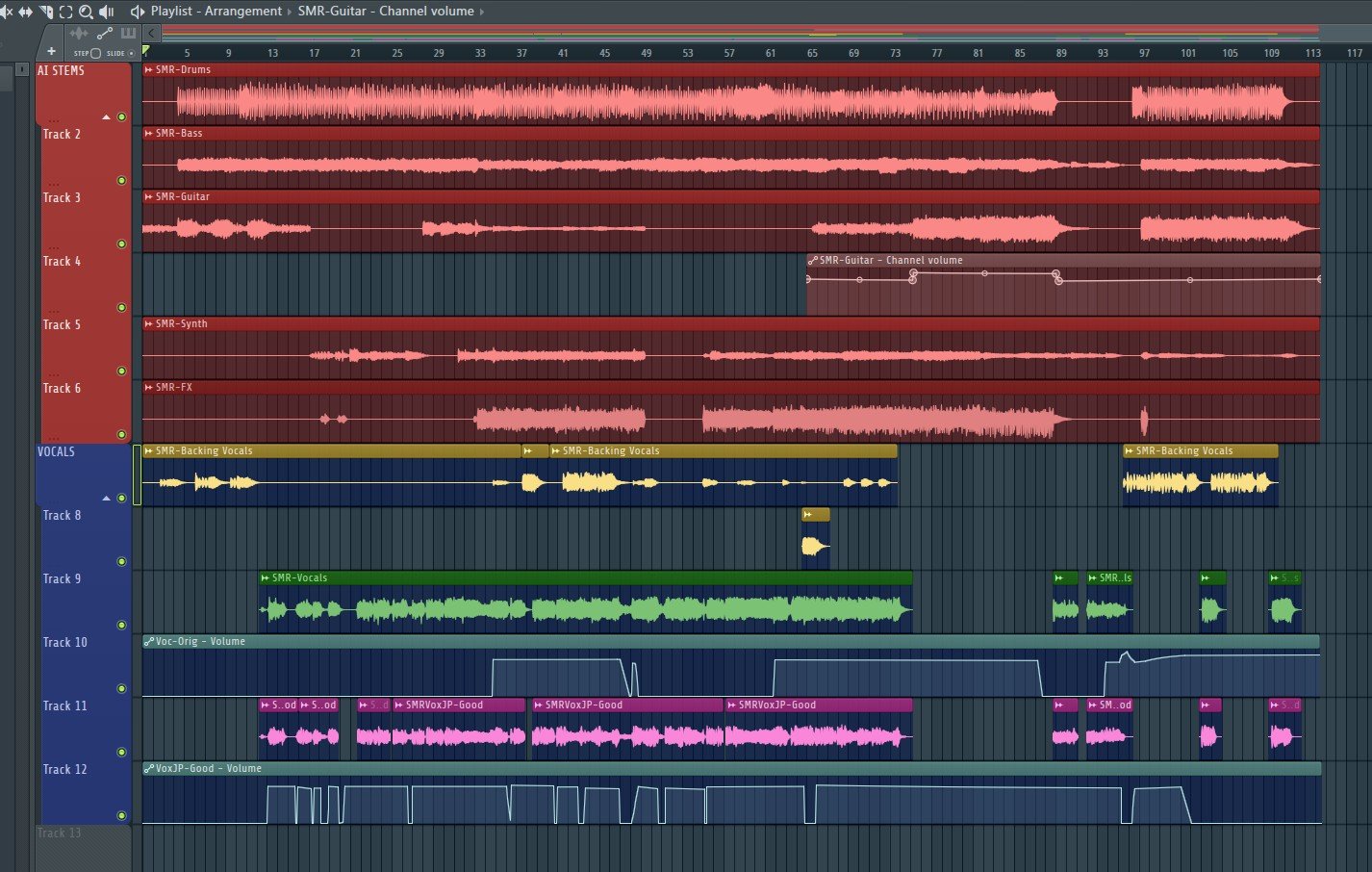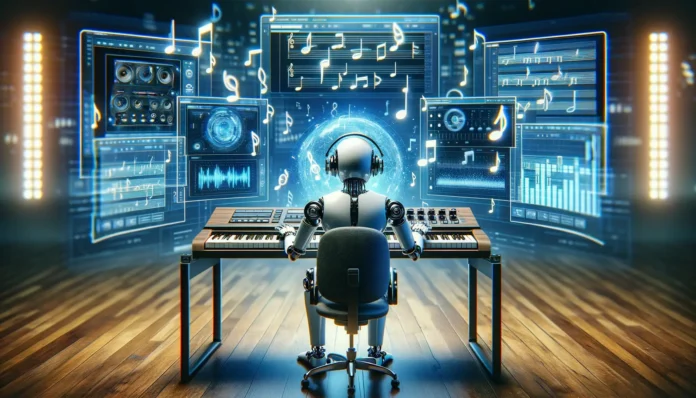How I am using AI to create music is changing
For the last 35 years, my process has always started the same way: just me, a guitar, and a notepad. I’d write songs from scratch, shaping lyrics and melodies that come directly from my soul. Songwriting has always been — and will always be — personal art.
Check this out….
AI MUSIC BREAKTHROUGH! This song “Reno” is not an AI song—it’s an AI-assisted song, and there’s a huge difference! “Reno” was originally written by Brian Jay Cline in the early 2000s as a country tune. In 2010, I gave it an indie rock twist. I added a hooky new melody for the guitar riff using the same chord progression created by Brian.
Now, with Betty’s favorite track in mind, I used AI as a tool—just like a modern digital plugin—to generate fresh stems that “covered” my 2010 version of the song.
Using FL Studio DAW, I mixed in my own vocals, did some punch-ins, added automation, mastered it, and boom—Brian’s song, authentically produced and performed by me. The AI didn’t write it; it just helped me shape it.
Total time invested? 4 hours instead of 2 weeks. That’s the power of using AI as a tool, not a replacement. Now that makes cents!
Stay tuned—this is only the beginning.
So What Can AI Really Do for Writing?
Well, AI can suggest ideas, phrases, or even catch mistakes like switching from first to third person, but it can’t capture the spirit of what’s in my heart.
Take my song Marineo Marineo, about my ancestral hometown in Sicily. My family has been there for at least 300 years, probably closer to 1,000. That connection, that love, is not something I can outsource to a machine. It has to come from me.
Listen on YouTube here.
So while AI will never write my songs for me, it can make the production process more efficient — saving me both time and money while still leaving room for me to shape the art my way. And in the case of Marineo Marineo, since it’s written in the Sicilian language, it can double-check my words to make sure I get everything technically correct.
By the way, for the video above, I took an image of my wife and I. Then used AI to lip-sync the song (HeyGen.ai). It’s a bit clunky and funky but effective. And besides, it was fun to create to see how far it can go in 2025. I suspect in a few years, this will get super realistic. So stay tuned for the next gen of music videos.
But let’s continue forward….
Creating the Music
In the past, I recorded all my own tracks in my home studio. It was a labor of love — but also a lot of labor. What used to take 2–7 days of tracking now takes just a few minutes with AI.
I use Suno.ai to create backing tracks and stems. Suno generates the music and even separates the stems so I can work with them directly. Once I have the stems, I import them into my DAW (I use FL Studio, but any DAW works).
From there, I decide whether to keep them as-is, tweak parts, or add layers of my own. Honestly, most of the time, the stems are so good they hardly need changing.

Vocals
Vocals are where AI and I meet halfway.
First, I strip the AI-generated vocals out of the stems. Then I replace them with my own. I have two options:
- Record live vocals — the traditional way, which ensures the performance is authentic, but also requires setup, tea for the voice, and multiple takes.
- Use Kits.AI — I can feed the original AI vocals through my voice clone, transforming them into my voice. It works surprisingly well, but there are limitations. If the melody goes beyond my natural vocal range, the clone starts to screech. Kits.AI has pitch correction, but too much can make the voice sound unnatural — not like me.
At the end of the day, nothing beats a live vocal take. But sometimes AI can save hours in the studio when I just need a rough version or a background part.
Screenshot of my DAW showing the stems. I use FL Studio. The first track is the AI instrumental that is already mixed down. The other tracks are the vocals. This is where I do the mix and use panning and volume automation to assist with making the vocals even better.

Background Vocals
In the past, I’d hire background singers or record duets myself. Sometimes my daughter would help, but when she became unavailable, I had to outsource — often paying $50 to $500 per track.
Now? AI makes this easy. With Kits.AI, I can generate harmonies, duets, or background vocals for just $10 a month. That’s unlimited use, compared to hundreds per session before. It’s not perfect, but it’s practical.
Below is my latest creation, “Slow Mo Rosie”. I wrote the song based inspired by a goth-style family member, actually named “Rosie”. I wrote the song, created then created it using Suno.AI. Then, I downloaded the stems, replaced the vocals with my own, and used the background vocals from the original Suno stems.
For the video, I used Canva to create the main image, uploaded it to Vizzy.ai to create a one-image video with the beat synth thing. Fast and easy. But wait, I put that video into my Filmora video editor and punched in some HeyGen lip-sync videos I created using that same 1 image. Added in some fun effects, and voila, in a few hours, a music video that I can share online with music lovers.
The total time invested was 1 full day, about 8 hours, song and music video too! That’s efficient. Much better than weeks of hard work. The output is basically the same, but the financial and time investment, far less, and thus I can still put food on the table.
The Reality of Music in 2025
Here’s the hard truth: there’s no money in music sales anymore. CDs are gone, streaming pays pennies — literally not enough for a coffee at Starbucks. For most independent artists, spending $500 to $1,000 per song would mean financial ruin.
That’s where AI brings balance. It allows me to keep creating personal art without burying myself in debt. It doesn’t replace the heart of my music — it simply removes barriers.
In 2025, my process looks like this:
- I write the song myself (always).
- I use AI for stems and background ideas.
- I record or clone my vocals or record live vocals, whichever makes more sense and feels right
- I produce in my DAW, mixing the human and AI elements until the song sounds true to me.
AI isn’t my co-writer. It’s my assistant. It speeds things up, saves me money, and keeps me focused on the part that really matters: making music that comes from my soul.











